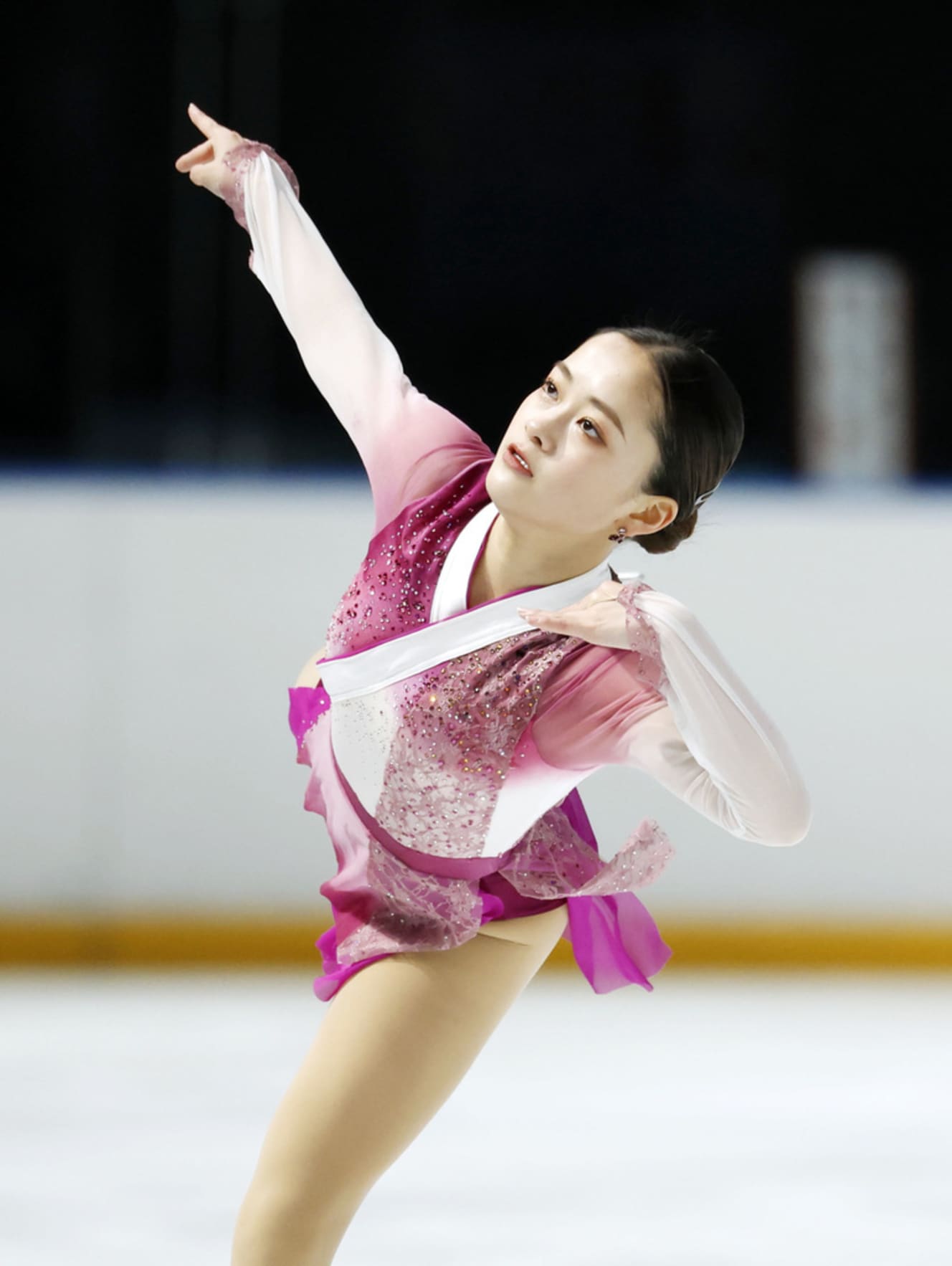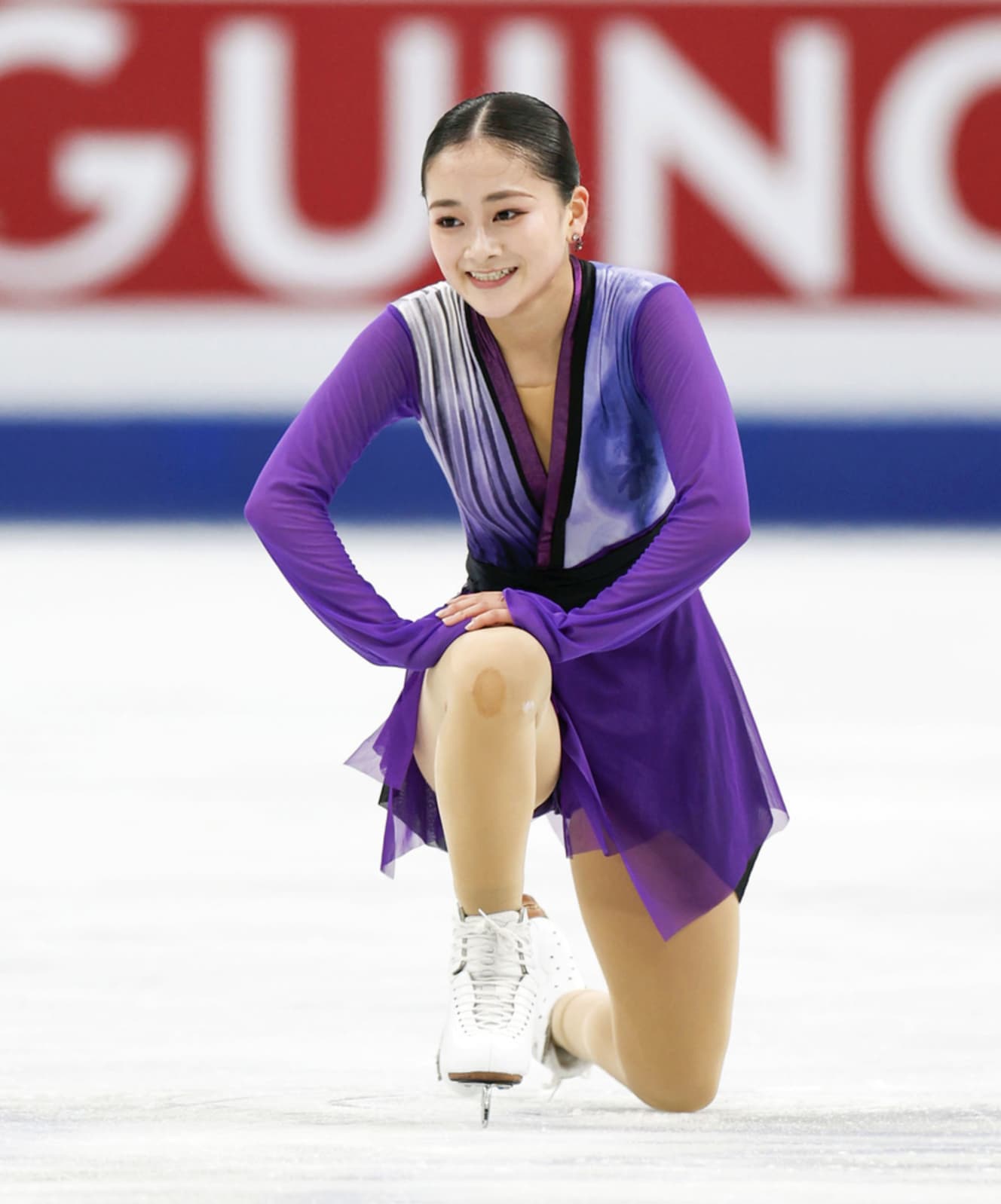Miraculous! from a Serious Injury to Her First Gp Series Win! Women’s Figure Skater Rinka Watanabe’s Cinderella Story
The biggest star of this season’s Japanese figure skating world. This is how the people concerned describe 20-year-old Rinka Watanabe (TOKIO Inkarami, Hosei Univ.).

In the 2021-22 season, he was almost unknown, finishing 10th in the World Junior Championships, but from the 2022-23 season, he has been a full-fledged member of the senior ranks. She won her first international competition, the Lombardia Trophy last September, defeating Beijing Winter Olympics bronze medalist Kaori Sakamoto (Sysmex), and then won the second round of the Grand Prix (GP) series, Skate Canada, in her first appearance as a substitute for an absent skater.
She was nominated for the “Best Newcomer” award at the ISU Skating Awards, the annual awards ceremony of the International Skating Union (ISU), and in June, she was selected to perform in “One Piece on Ice,” an ice show featuring famous skaters such as Masama Uno (Toyota Motor Corporation). She is truly a Cinderella story.
On the other hand, Watanabe herself has been criticized for her speedy rise in the ranks, saying, “I’ve been promoted too fast. I was a new employee and now I am a department manager.” She was also perplexed that her feelings had not caught up with the rapid changes in her position. At the World Championships in Saitama Super Arena in March this year, his triple axel (triple-axel jump), his most popular weapon, failed to work in both SP and FS, and he placed 10th. With her bitter experience as food for thought, she is expected to perform as well as her “position” in the coming season, where she has risen to the top.
Her favorite toy is a stuffed giant bug, which she saw at an aquarium when she was in junior high school and “was attracted by the fact that it could live even if it fasted for six years. He has a strong character, holding a stuffed giant Slider in both hands during interviews.
The story of how he came to prominence is also eye-catching. She started skating at the age of three, fascinated by Shizuka Arakawa’s gold medal-winning performance at the 2006 Winter Olympics in Torino, and jumped triple jumps in succession from early on, winning the B class of the All-Japan Novice Championships. However, he then went through a long period of disappointment.
In his second year of junior high school, he suffered from avulsion cartilage in his right knee, and underwent surgery to transplant a hip bone into his knee. It took several months before he was on the ice again. After that, he followed his coach, who was moving his base overseas, to Canada, but he was unable to grow.
He was able to break out of his current situation because of “a decision” he made. He chose to return to Japan from Canada when the spread of the new coronavirus restricted his freedom of travel. After receiving instruction from Coach Mie Hamada at the Kinoshita Skating Academy in Kyoto, she met Coach Kensuke Nakaniwa, whom she still works under today, in April 2021.
She said, “I never had confidence in myself before, but after meeting Mr. Nakaniwa, my attitude toward skating changed. He believes in me more than I do, so I can believe in myself now.”
Watanabe herself also says this.
She had high potential, but was too afraid of failure to show her ability in competitions, but Coach Nakaniwa told her, “If you practice properly, your success rate will increase. You may fail, but it doesn’t mean you will never fail. He was corrosive to dispel the fear of competition.
It was also Coach Nakaniwa who gave him the weapons to compete on the world stage.
This prompted him to challenge the triple axel, which had been synonymous with Midori Ito, silver medalist at the 1992 Winter Olympics in Albertville, and Mao Asada, three-time world queen, and jumped it competitively with Ami Nakai (TOKIO Inkarami), a 15-year-old fellow competitor who Watanabe says is “like a younger sister to her. This was the catalyst for Watanabe to continue to challenge herself in competitions, even when her success rate was low, and to show that she was capable of big tricks.
Last season, she took her time in preparing her body and mind for the challenge. The real showcase of her skills came at the GP series in Skate Canada. She was 6th in SP due to Shinba Higuchi’s (Noevir) right leg injury, but she landed all seven jumps safely, including a triple axel at the beginning of the free skate, which was based on the popular TV drama “JIN”. When the music stopped, she closed her eyes and clenched both fists with a look of deep emotion on her face. She was so excited to reach the top of the podium in Canada, the place where she had spent her memorable years, that she said, “Something miraculous is happening,” which was very impressive.

The 20-year-old, who is considered an extremely late bloomer in the figure world, continued her breakthrough, placing 4th in the December Final, in which only the top 6 in the GP series are allowed to compete. However, his performance, which far exceeded his own expectations, was, according to him, “I was choking myself.
At the All-Japan Championships in December, where she was the center of attention, she was crushed by the pressure and finished in 12th place, and at the World Championships, where she competed for the first time, she finished in 10th place. Her performances in these two competitions must have been far from what she was supposed to be. Still, she is a strong skater who has gone through a lot of hardships,” said coach Nakaniwa.
When Coach Nakaniwa saw Watanabe skating in the free skate at the World Championships, she cried, thinking back on her journey so far. Seeing her tears, Coach Nakaniwa said, “She won’t last (in the future) if she cries over something like this. I will be back here next year,” Watanabe declared emphatically.
She intends to double her triple axel to two in FS, in order to make even bigger flowers bloom in the new season, but Watanabe herself has a belief that “figure skating is not decided by jumps alone. Her ideal image is “to put together a work of art, no matter where the paint drips. She says emphatically that she wants to create a program that condenses all her spins, steps, skating, and expressive power.
I think all my experiences have made me who I am today, and I wouldn’t be who I am today if any piece was missing. I am truly grateful to all the people who have been involved in this way. I want to go even higher, and I will do my best to give back even more.”
I am looking forward to the slide that only a late-blooming, hard-working person can draw.
PHOTO: Kyodo News (1st and 2nd photos) From her instagram (3rd to 5th photos) Interview and text by: Daichi Hadano


